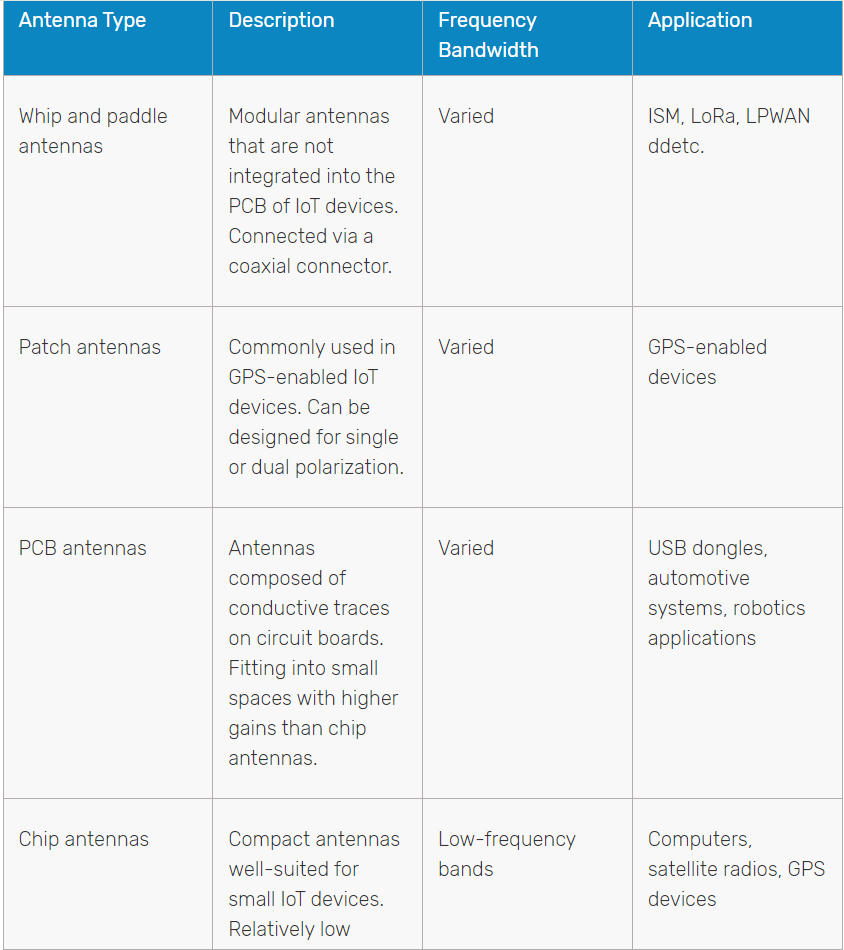

Key Takeaways
IoT antenna designs depend on the wireless protocol in use, necessitating important protocol selection.
Consider factors like directionality, form factor, gain, and regulatory standards when choosing an IoT antenna.
Antenna types include whip antennas, patch antennas, PCB antennas, and chip antennas, each with its own advantages and use cases.
As IoT applications continue to expand and rely heavily on wireless connectivity, the role of antenna design becomes increasingly vital. These applications often require wireless communication with IoT gateways and other devices within the ecosystem, especially when wired connectivity is impractical or unfeasible.
Consequently, the demand for embedding multiple high-performance, ultra-compact antennas in IoT devices has become a standard requirement, presenting significant challenges for product developers in this field. Read on as we discuss antenna design for IoT applications.

Antenna Form Factor Design for IoT Applications
Depending on your protocol, there are a variety of antennas you could incorporate into IoT devices. Different antennas have different frequency bandwidths, which must be taken into consideration.
Antennas For IoT Applications

Antenna Design for 5G Applications
When working on antenna designs for IoT and 5G applications, it is crucial to consider regulatory standards in different regions worldwide, including the Radio Equipment Directive (RED), Electromagnetic Compliance, FCC Class A and B Rules, and SAR requirements.
The key parameters to consider when selecting an antenna are:
●Antenna type
●Operating frequency band
●Field of View (FoV)
●Radiation pattern
●Antenna gain (total power radiated)
●Shape
Specifically for 5G, compact antennas with high gain are especially desirable. To support increased densities of connected devices operating at higher data rates simultaneously. Addressing this challenge will necessitate higher cell densities and broader utilization of multiple-input, multiple-output (MIMO) antenna technologies, which are already utilized in preexisting networks.
MIMO involves an array of multiple transmitting and receiving antennas, commonly found in current LTE networks as an 8 x 8 antenna array. Using spatial multiplexing, MIMO breaks down a signal into encoded streams, which are transmitted simultaneously through different antennas in the array. The transmitting and receiving devices are equipped with multiple antennas and employ signal processing for encoding and decoding the multiplexed signals.
Contact: Diana Xie
Phone: 86-15815571536
E-mail: sales@global-antenna.com
Whatsapp:8615815571536
Add: Room826, Floor 8,BLDG 13, University Science Park(East), Zhengzhou City, P.R.Henan, China.Zip Code: 450000